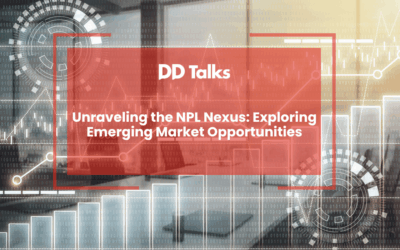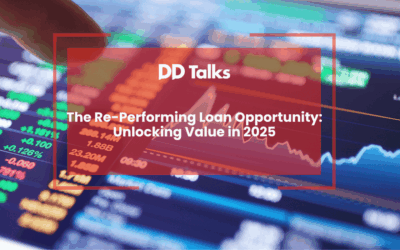Key Takeaways: European Asset-Backed Securities Market Outlook
- Market Growth: The European ABS market is projected to exceed €250 billion, driven by technological innovation and regulatory clarity.
- Technology Transformation: Blockchain, smart contracts, and AI are revolutionizing securitisation processes, enhancing transparency and efficiency.
- ESG Integration: Sustainable finance principles are becoming standard, with green securitisation and sustainability-linked structures gaining significant momentum.
- Regulatory Evolution: The Simple, Transparent and Standardised (STS) framework continues to promote investor confidence and market stability.
- Emerging Opportunities: New asset classes like digital assets and renewable energy infrastructure are creating diverse investment landscapes.
- Risk Management: Advanced analytics and machine learning are enabling more sophisticated credit risk assessment and portfolio management.
Table of Contents
- Current State of the Asset-Backed Securities Market in Europe
- Evolution of Securitisation Technologies Through 2025
- How Will ESG Shape Future Securitisation Practices?
- Emerging Market Opportunities and Risk Assessment
- Regulatory Framework Changes and Compliance Challenges
- Innovation in Structured Finance Products
- Market Predictions and Expert Insights for 2025
Current State of the Asset-Backed Securities Market in Europe
The European asset-backed securities market has shown remarkable resilience despite recent economic challenges. Current market volumes exceed €250 billion, with significant growth in traditional sectors like residential mortgages and auto loans. Key stakeholders, including major banks and institutional investors, continue to drive market expansion while adapting to evolving regulatory frameworks.
Recent regulatory developments, particularly the Securitisation Regulation (EU) 2017/2402, have established a more transparent and standardised market environment. The Simple, Transparent and Standardised (STS) framework has become a cornerstone of European securitisation, promoting investor confidence and market stability.
Evolution of Securitisation Technologies Through 2025
Digital transformation is revolutionising the securitisation landscape, with blockchain technology leading the charge. Smart contracts are streamlining transaction processes, reducing operational costs, and enhancing transparency. The integration of automated compliance systems is particularly noteworthy, as it enables real-time monitoring and reporting of securitised assets.
As highlighted in the SSF Days Italia 2025 discussions, technological innovation is reshaping traditional securitisation practices. Distributed ledger technology is expected to facilitate faster settlement times and improved asset tracking, while artificial intelligence tools enhance risk assessment capabilities.
How Will ESG Shape Future Securitisation Practices?
Environmental, Social, and Governance (ESG) considerations are becoming increasingly central to securitisation strategies. Green securitisation is experiencing unprecedented growth, with sustainable asset-backed securities gaining traction among institutional investors. Sustainability-linked structures are emerging as innovative financing tools, connecting funding costs to environmental performance metrics.
Social impact bonds and environmental compliance requirements are reshaping the market landscape, creating new opportunities for responsible investment. The integration of ESG criteria into securitisation frameworks is expected to become standard practice by 2025.
Emerging Market Opportunities and Risk Assessment
New asset classes are emerging in the securitisation market, including digital assets and renewable energy infrastructure. Geographic expansion continues across Europe, with emerging markets showing particular promise. Risk management innovations, including advanced analytics and machine learning algorithms, are enabling more sophisticated assessment of credit risks.
Market stability factors remain crucial, with increased focus on portfolio diversification and stress testing. The development of new risk mitigation techniques is enhancing market resilience and attracting broader investor participation.
Regulatory Framework Changes and Compliance Challenges
The regulatory landscape continues to evolve, with updates to STS regulations and capital requirements shaping market dynamics. Cross-border considerations are becoming increasingly important as the market becomes more integrated. Reporting standards are evolving to accommodate new technologies and asset classes.
Compliance challenges include adapting to enhanced disclosure requirements and maintaining alignment with evolving regulatory frameworks. The harmonisation of European securitisation regulations remains a key focus area for market participants.
Innovation in Structured Finance Products
Product innovation is driving market growth, with new structured finance solutions emerging to meet diverse funding needs. Hybrid structures combining traditional and innovative elements are gaining popularity. Alternative funding sources, including peer-to-peer platforms and tokenised assets, are expanding market opportunities.
Market adaptation strategies focus on flexibility and responsiveness to changing investor demands. The development of customised securitisation solutions is enabling broader market participation and enhanced liquidity.
Market Predictions and Expert Insights for 2025
Growth projections indicate significant market expansion through 2025, driven by technological innovation and regulatory clarity. Industry experts anticipate increased standardisation and efficiency in securitisation processes. Market transformation scenarios suggest greater integration of sustainable finance principles and digital technologies.
Investment opportunities are expected to diversify, with particular growth in green securitisation and technology-enabled structures. The market outlook remains positive, supported by strong fundamentals and ongoing innovation in product development and risk management.
Frequently Asked Questions
- What is asset-backed securitisation in Europe?
- Asset-backed securitisation is a financial technique where pools of assets like mortgages or loans are transformed into tradable securities, currently representing a market exceeding €250 billion in Europe with growing transparency and standardisation.
- How is technology transforming securitisation practices?
- Digital technologies like blockchain and artificial intelligence are revolutionising securitisation by enabling smart contracts, real-time asset tracking, enhanced risk assessment, and more efficient transaction processing.
- What role do ESG factors play in modern securitisation?
- ESG considerations are becoming central to securitisation strategies, with green securities and sustainability-linked structures emerging as innovative financing tools that connect funding costs to environmental performance metrics.
- What regulatory changes are impacting the European securitisation market?
- The Securitisation Regulation (EU) 2017/2402 and the Simple, Transparent and Standardised (STS) framework have established more transparent market standards, promoting investor confidence and market stability.
- What are the emerging opportunities in securitisation?
- New opportunities include digital assets, renewable energy infrastructure, advanced risk management techniques, and expanded geographic markets, with a focus on portfolio diversification and innovative structured finance products.
- How is blockchain influencing securitisation?
- Blockchain technology is streamlining transaction processes, reducing operational costs, enabling faster settlement times, and providing improved transparency and real-time asset tracking.
- What are market growth projections for securitisation through 2025?
- Market predictions suggest significant expansion driven by technological innovation, regulatory clarity, increased standardisation, and growing integration of sustainable finance principles and digital technologies.
NPL Markets in UK and Ireland




0 Comments